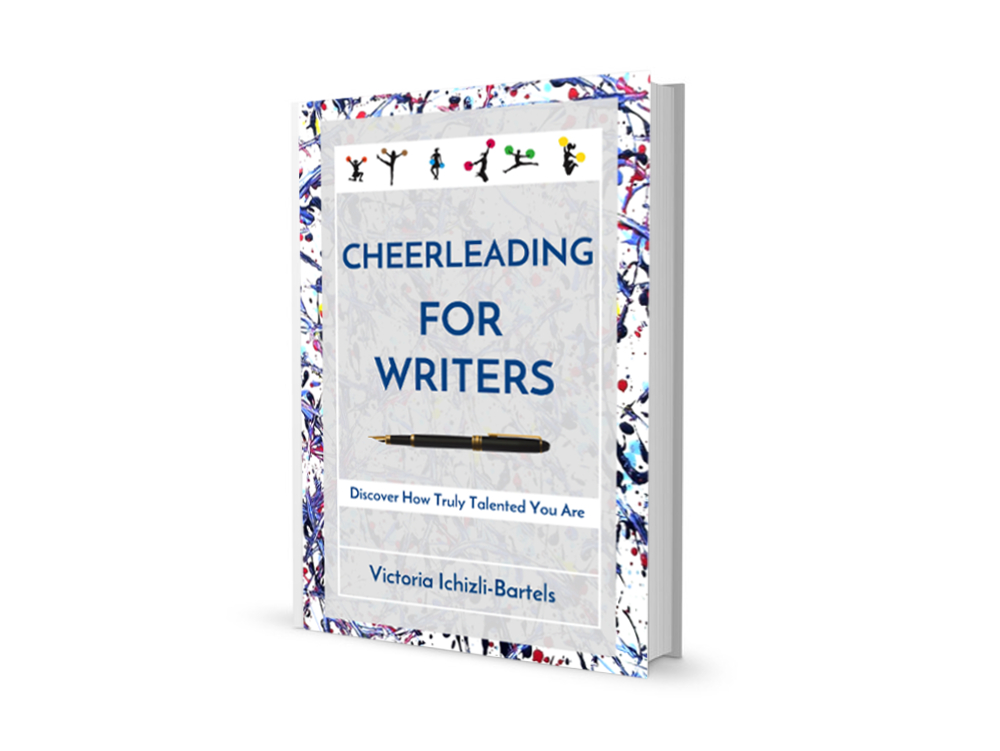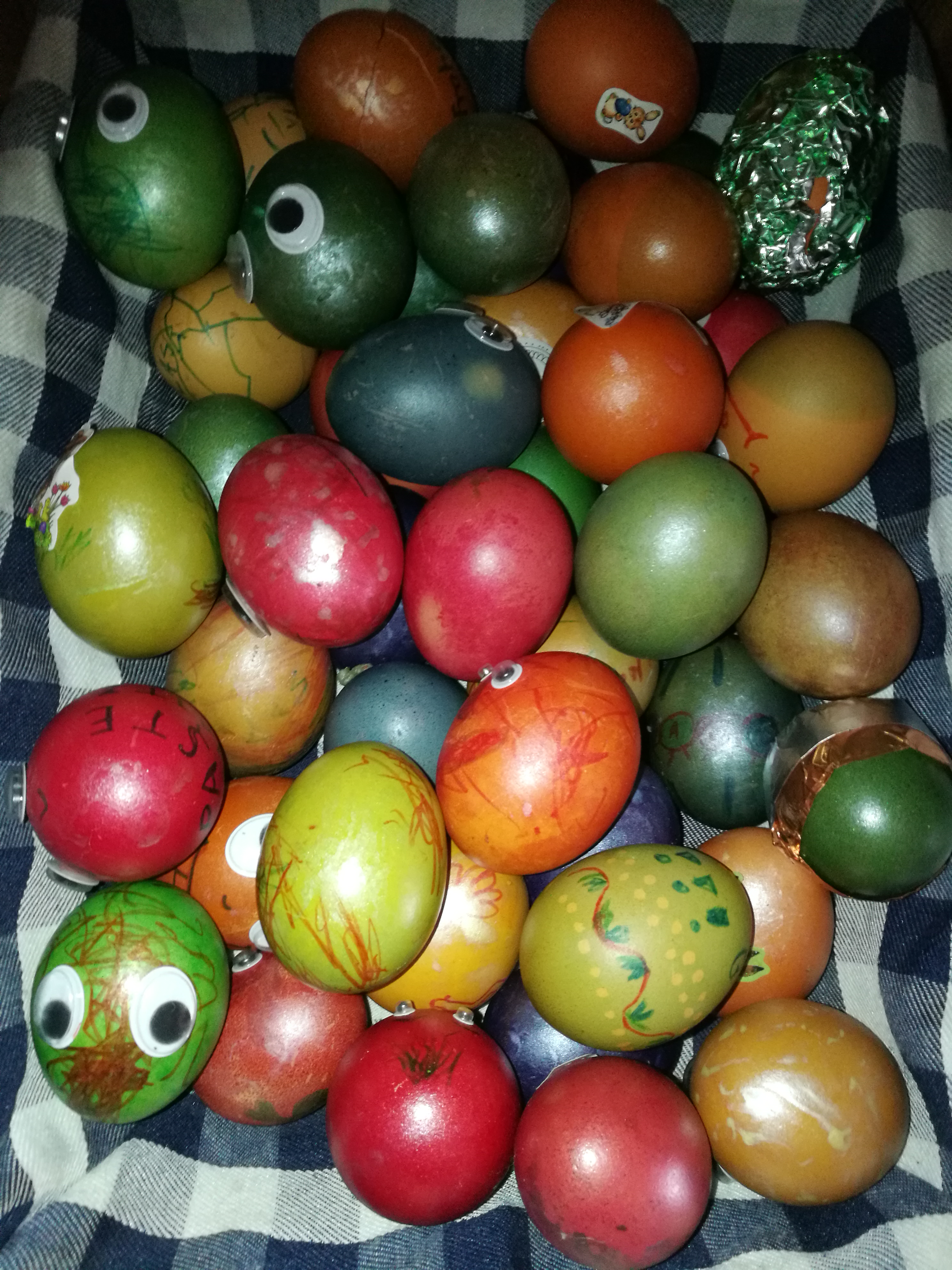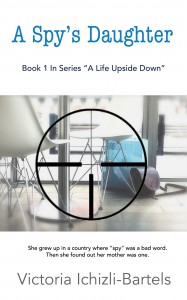
For me as a self-publishing author, writing books is always connected to:
- Writing of the first draft
- Self-editing
- Professional edit and revision after that
- Preparing and releasing for publication
- Marketing
Each of these five areas contains multiple sub-tasks as well. Today, I will concentrate on the writing of the first draft.
Sometimes when I tell other writers about the 5 Minute Perseverance Game and that I use it for writing, I am met with a version of the following reaction, “I can’t write for only 5 minutes a day. I need an hour to find back into the thinking process of writing. To find back into my work-in-project.”
That made me ask myself whether I need a longer time to think of a subject or whether can I rely on intuition and just continue writing whatever comes on any given project.
I wrote all of my projects in bits and pieces making progress on a daily or weekly basis. There was not a single of the now ten published books for which I wrote the first draft from beginning to end every day or most of the day in a month or so. And I always have many projects in parallel even if I don’t take all of them into the 5 Minute Perseverance Game.
There have been various paces to each of the writing projects too. Some of them I wrote a few sentence or paragraphs s every day, and one of them I wrote one chapter per week, writing most of that chapter on one day, editing and posting on my blog on the other. Some of the contemplation on each chapter went on before writing and often ended up being different from what I planned or fantasized while taking a shower. This project was a novelette called “Nothing Is As It Seems” which originated from a writing prompt by my dear friend, writing teacher, and best-selling author, Menna van Praag.
Recently as I updated back-matter of the “Nothing is as It Seems.” I skimmed through its pages and noticed that there are some gaps in this novelette that could have been enhanced, for example, more dialog between siblings, the main character revealing more of her side of the story and not only what she was after. I wonder if I could have caught this if I would write the book in one piece instead once a week.
My guess today is that have I written it a little bit every day, my memory could have been more fresh between the writing sessions, and there would be fewer gaps in the story.
But this will remain a guess since I never tried this other option with the same story. For that latter case, I can only report on the other books and writing projects.
Let’s take the latest or rather the current one. I mean this article. I write it a few minutes every day. And I realize that even in case of everyday writing I need a few seconds to recall what this project is about. A few seconds, not minutes or hours. As I used to think before. And what else is important, it is to get immersed in the project during these seconds. To be fully present. Then mere moments become enough to take the thread where I left it and continue.
But also when I wrote “Nothing Is As It Seems” I did something similar, I read the previous chapter and some times several chapters before drafting the next time. Because of a longer gap (a week) and whirl of the thoughts on the project during this gap, I had to spend more than seconds to recall where I left the story the previous time. Every time there was a different mood, a different atmosphere which colored the chapter I was writing. The contemplations before sitting in front of my computer and the plans or rather fantasies of how the chapter would turn out rarely, or rather, never turned out as I pictured them when I took a shower or did something else. The text became a reality when I wrote it during those hours I spent in front of my laptop monitor and typing on its keyboard on that particular weekday.
I finished the first draft of the “Nothing Is As It Seems” before I wrote “5 Minute Perseverance Game” and before I started playing it regularly. But I have used the game to publish the novelette. More on this and using the game for other publishing projects in another post.
I’ve tested the 5 Minute Perseverance Game in respect to writing many times. And I will probably be doing this as long as I write since it turned out to be the least stressful and the most efficient approach to my writing.
But two of these times were my first ones. The very first time was when my dear friend and writing teacher, Menna van Praag, suggested to her students including me to play it so we could make progress with our writing projects. During the time of about a year where, we all attended Menna’s telephone seminars, and we all met on the internet in a Facebook group organized by Katrin Bauck, another dear friend, amazing artist, children’s writer, and Menna’s student too. The group had a beautiful name “Passionate Writers.” At one of the seminars, as many of us complained not finding time to write, Menna suggested to write 5 minutes a day for the work-in-progress and then report to the group how it went. All who participated in the call that day said yes to the challenge, including Menna. I remember making tremendous progress and loving the process of just writing. I realized that when you have only 5 minutes to write, this is what you do. You just write. You don’t contemplate too long what to write. You just do it.
Later I had what people call a writer’s block again. It was fear of the final results and what would people say, and other thoughts of that manner. Several months into this block I remembered the game suggested by Menna and how I felt during it. So I started writing again, writing in small bits every day and also asked my fellow writers how they were doing.
This and support by many wonderful cheerleaders helped me finish that book.
The second “first” time was when I moderated a round of this game for the first time. My friends at the Black Label Writers’ Club in Aalborg — which you guessed correctly was named after a whiskey brand; I heard that they had a bottle of it at their first meeting; therefore the name — have asked me once how I managed to pursue several different writing and non-writing projects at the same time. As I was sharing my experience, I suddenly recalled the game and suggested to play it within our club. I volunteered to create a dedicated Facebook Group for it and to moderate the game rounds.
A little into the game round, another friend, and writer, as well as an award-winning YA (Young Adult) fantasy author in Denmark, Sascha Christensen, sent me the following personal message: “The comment you made at the writers’ panel helped break my writer’s block.”
The comment she mentioned was one of my all-time favorite quotes, which I don’t know who said it for the first time. I have heard it in many variations from different people but never in my preferred form.
Here is how I like this quote most:
“You can’t edit an empty page.”
After saying “No problem” and “You are very welcome” to Sascha, and after chatting a while and exchanging on author’s challenges, I suggested her to join us in our perseverance game. After listening, or rather reading out what the rules of the game were, she agreed to play.
She commented time to time on the results and wrote, “Man, this concept is actually really effective for me. :D”
In one of the following rounds of the game, she let us in the group know that she finished the manuscript and sent to her publisher.
That was a fantastic result and reward for me to keep on playing the game and sharing my experience.
I had my own revelation during the game. I have written six thousand words in a book within a month while writing just 5 minutes, sometimes a bit more, at times a bit less, a day. On a few days of that month I didn’t manage to write, but on the most I did. Such a tempo would mean that with just a handful minutes a day I would manage to write about 70000 words within one year, which is enough material for a short novel or at least a novella.
That experience and the wisdom about an empty page shared with Sascha has revealed again and again the magic and power of just creating without too much contemplation about the process, not only in the writing projects but even in those of technical nature. But more on this in some of the future posts.
The sub-tasks of writing the first draft
Working on the first version of a book or article means for me the actual writing that is putting new words onto a page. But sometimes it also includes research, that however kept at the minimum as not to procrastinate from the actual writing, and of course the pre-edit. This pre-edit, as I call it, occurs before the self-edit and way before the professional edit. The pre-edit is happening (and I often omit it) between the writing sessions, which in my case are short, but sweet. The primary purpose of this pre-edit is just to remind myself where I stopped the project the previous time, make a note or a mini-edit here and there if I noticed something to be fixed already at this stage.
With time I realized that the session of the actual writing became sweeter and more fun when I stopped at the right moment. When the chunk of writing was done. Like a mini-story or a self-contained message “solidifying” itself on the screen or paper. But this stopping at the right moment often also includes for me writing a teaser for the next scene or chapter. Like a prompt for the next session. If I am not mistaken, that was what Hemingway did when he finished for the day. I read that he always started a new chapter or scene to make it easier for him to continue his writing the next day. By that, he tricked out the famous “writer’s block” and the empty-page fright.
When the job is done or how big should the job be?
There is nothing to compare to the feeling when the job is done. For the day or in general. And it is quite curious that we humans tend to want to make everything big, and to see everything huge being as the best: our houses, our cars, our achievements and even tasks. So the bigger the job, we think, then the greater satisfaction when we finish it.
But interestingly enough when we are happy, then we are happy. There is no happier than before. We are just excited and thrilled and blissful. Often by the time we achieve the big task (if we ever do, since the fear of failing a big task is much too overwhelming and pressing down), we are so exhausted and unhappy that we don’t have enough energy to celebrate.
However, after achieving something small and taking time to celebrate it, by giving oneself a point, a praise, a smile, we are most probably to have the energy, and it boosts us to do the next step.
The kaizen approach, which I mentioned introduced in the article “The 5 Minute Perseverance Game and Kaizen” is all about little steps, and “small moments.” That is how Robert Maurer, the author of the book “One Small Step Can Change Your Life: The Kaizen Way,” and who employed kaizen both for private and corporate clients, names these small and often ignored events.
In the chapter titled “Identify Small Moments,” he writes:
“The kaizen approach to life requires a slower pace and an appreciation of small moments. This pleasant technique can lead to creative breakthroughs and strengthened relationships, and give you a daily boost toward excellence.”
When it comes to writing, this is what makes it most exquisite to read. It is when you as a reader enjoy each moment, each word, each paragraph the writer puts on the page, and realize that it comes from the author’s enjoyment to create those paragraphs of text.
So, let’s savor each small step, each bit we write. Let’s let our fingers fly over the keyboard and find out in surprise that, in the short time we spent there, we wrote ten, twenty, a hundred, or a thousand words. And then let’s marvel. Did I write this just now?
What are your opinion and experience? Did you try to observe yourself when you write in bigger or smaller chunks per day? How does your experience of fun and stress change depending on how long you spend on writing a particular scene or project? Did you ever let yourself be satisfied and praise you for writing one paragraph?
What is this blog series about? You can find this out in its first blog post called “5 Minute Perseverance Game – Moving my Favorite Game to my Writing Blog.”
On the picture above: A view on a small flower meadow between cozy houses in a not far from where we live in Aalborg. This colorful mixture of all kinds of flowers reminded me of the crazy mixture of moments I have every day, also in writing. And in each other moment or angle from which I consider them, they appear to me differently.
***
And now on how my 5 Minute Perseverance Game (5MPG) has progressed in August and my plans (including the game design) for September.
Results for the round August 2017 of the 5MPG: 262 points out of 651 possible, which is 40% that is less than in previous months.
Conclusions as seen today: too ambitious planning, unrealistic plans on how many projects can be pursued on a daily basis, a wish to relax more and take it slow (apparently, a positive outcome of the vacation 🙂 ), a tendency and a desire to concentrate more on one project during any given day.
Plans and game design for the September 2017 round of the 5 Minute Perseverance Game:
I have identified eight areas, each of them contains several projects or tasks. These are:
- Voluntary work for S1000D community (primarily for the Business Rules Working Group)
- Tools’ page content development for optimistwriter.com
- Non-fiction writing on various topics, including two books (one on business one on motivation and self-gamification), and blog post writing
- Fiction and Memoir writing (three books: two are fiction, and one is a collection of memoir essays)
- Marketing of Books, Tools, and Training Material (includes update, and publishing)
- Training Courses content development
- Admin work (incl. family matters, documents, business/home office matters, household)
- Free time, fun, health, and movement (including playing with and drawing for my children (they like little drawings under their dinner plates), reading, meeting friends, doing something for my body (like Yoga, dancing, other), straight posture, 7 hours sleep, etc.)
Differences from past months and new rules for the September round of the 5 Minute Perseverance Game:
- There can be more than one project or activities for each of the eight areas or types of activities.
- If I get to attend to at least one project in each field of any given day, then I get two additional points as a bonus. For each full set of eight points (one for each area of those defined, above) I get two additional points.
- If I finish a project or a large task resulting in external delivery, such as sending a manuscript to an editor or publishing a blog post or similar, then apart from getting a regular point for doing the task, I get five bonus points.
- I can get more than one point for the same area, and even the same project on any given day. The condition here is that I get the point when a certain amount of work is done, and I change the activity. The change of the activity either I work a different project within the same area or work on a project from a different area, and then come again to the previous project.
- I can decide by myself which of the project to address in any given area on any particular day. It has to do with external and my own deadlines.
The time depends on the project, and on the activities of the given project. It can be ten seconds, often five minutes, but sometimes in exceptional circumstances even an hour. In general, a step should be self-contained, small (regarding its logic), doable and make sense.
I will report on this new design variant of the 5 Minute Perseverance Game in the coming article on this topic. The article will be how I experience this game during self-edits and revision of my work.
Copyright © 2017 by Victoria Ichizli-Bartels








